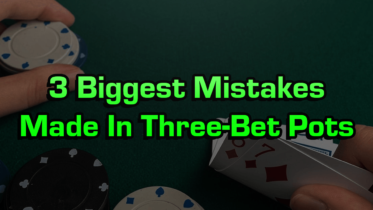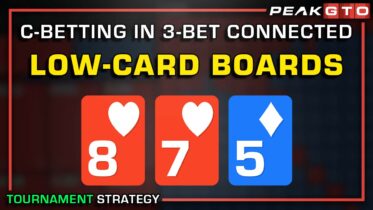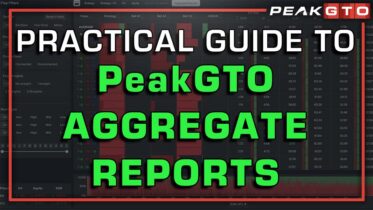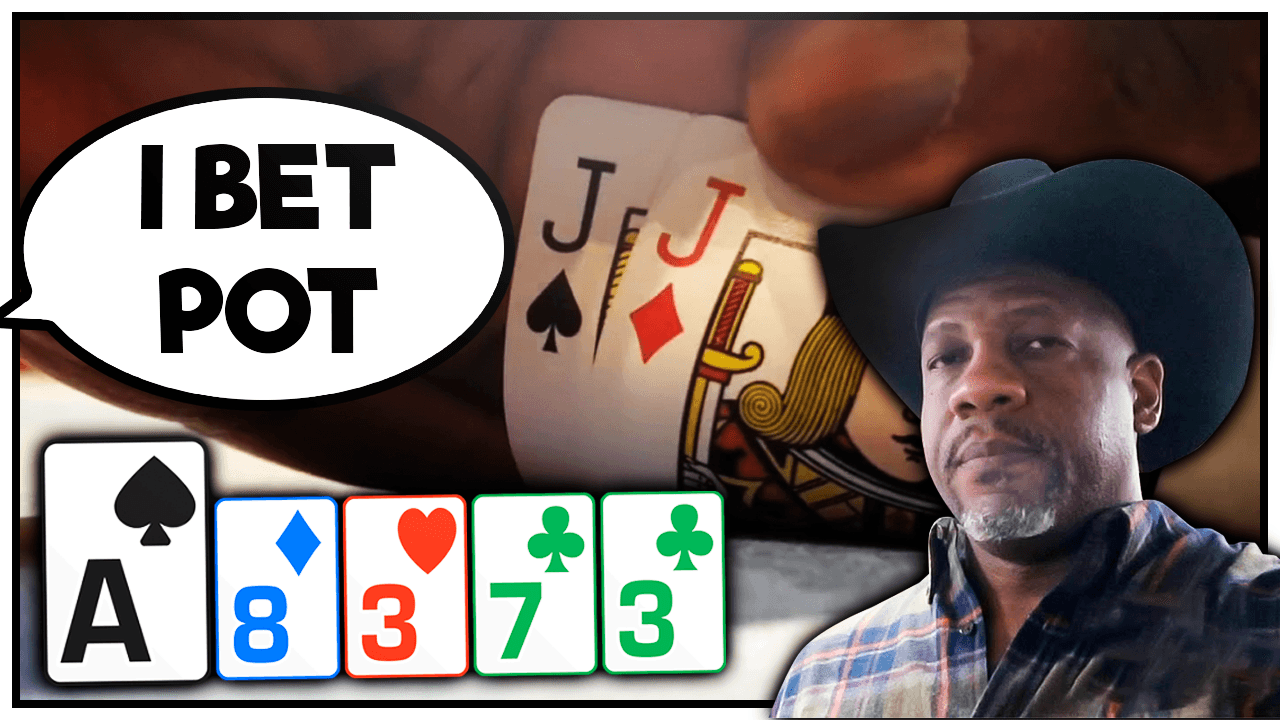In today’s article, we are going to discuss three of the biggest mistakes that players make in three-bet pots. I will share some quick tips you can implement immediately in your game to increase your win rate. These tips apply to both tournaments and cash games, as I feel players make the same mistakes.
Continuation Betting Too Often
Players are generally accustomed to continuation betting (c-betting) at a very high frequency. One of the most common scenarios you will face is when you raise pre-flop and the big blind defends. This spot requires a high c-bet frequency because of the huge range advantage you have, often 60%+. In three-bet pots, however, this is not the case. When you three-bet someone and they call, their range is already tighter. They fold all their trash hands that they originally raised with pre-flop, such as K-J offsuit or A-9 offsuit.
Take an early position opener, for example, they raise with a 15% range, and you three-bet from the button with A-K. Once they call, they probably only have the top 8-10% of hands, assuming they fold 30-40% of the time. Some people fold 50% of the time and now only have the top 7% of hands! You need to respect this tighter range by checking more on the flop and playing much stronger hands when going for three streets of value.
Let’s say the flop comes Q-8-2 rainbow, and you three-bet the cutoff versus middle position. On a brick runout (4 5 for example) you should only get three streets of value from A-Q, K-K, A-A and Q-Q. Most other value hands like Q-J, K-Q, J-J should just be checked on the flop because they need little protection and cannot get three streets of value in this spot. This differs from when we raise pre-flop and the big blind calls. We are happy to go for three streets of value with all of the strongest queens in our range.
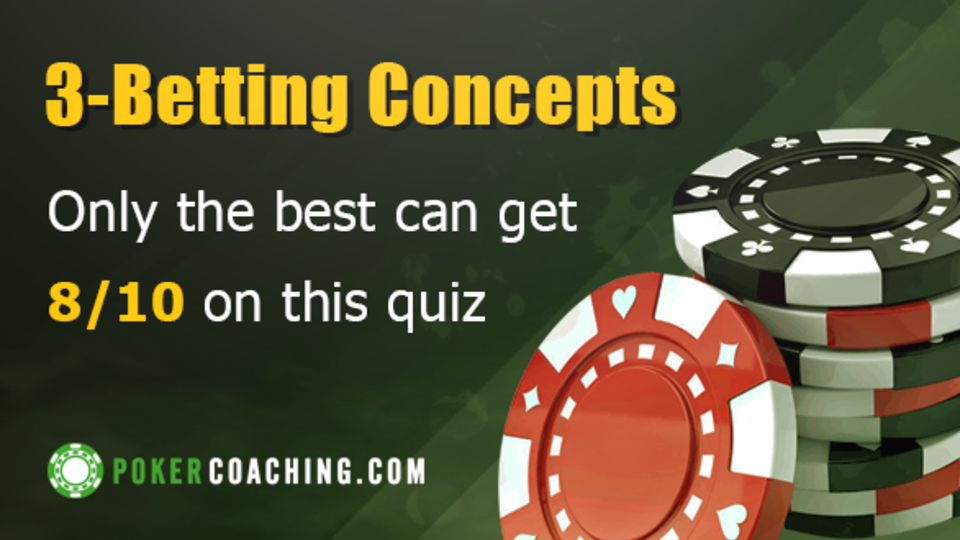
Do you think you can get 10/10 on our three-betting quiz?
Players Call Down Too Wide
Connected to the first mistake, players call way too wide for three streets in three-bet pots. You need to be much tighter in three-bet pots, since the ranges are tighter. Weak top pairs are rarely a call down for three streets and should be folded at some point.
Take that same Q-8-2 rainbow flop and assume the board runs out an ace and a three. You flatted in the middle position versus a cutoff open 100bb deep. Even a hand like A-K by the time you call flop and call turn shouldn’t be happy to call that third barrel. The cutoff’s value range should be something like A-Q, Q-Q, A-A, A-8 suited, A-2 suited, etc that it can three-bet with. Your A-K is simply a bluff catcher at this point. When ranges start very tight, they get extremely narrow by turns and rivers.
I recently did a hand analysis on the exact situation above. I raised from middle position, the cutoff three-bet, and I flatted A-K offsuit from middle position. The flop came Q-8-2, and I check-called. Turn was an ace, I check-called. River was a three, and the villain shoved. This is a pretty gross spot now. The cutoff probably shouldn’t be value betting A-J, and even A-K is a thin bet at this point. In my breakdown, I arrive at the river with A-K, A-Q, A-8 suited, A-J suited, K-Q, Q-J, Q-T suited. Basically, I have enough combos of A-8 suited and A-Q offsuit that A-K becomes a fringe hand to call with, assuming a 100% pot bet where my minimum defense frequency (MDF) is 50%.
A-K is simply a very fringe hand and doesn’t fall into the top 50% of hands I arrive at the river with. When you consider that players typically fold to a bluff, A-K becomes even more of a fold. In summary, be very mindful of how strong your range is and how tight your calling ranges should be in terms of relative hand strength.
Connecting To The Examples
Players tend to vastly under-bluff in three-bet pots. Since ranges are tighter, finding bluffs is difficult as lots of times your weakest hands are going to be made hands. Many players lack the ability to turn weak made hands into bluffs. Let’s take the previous Q-8-2 turned ace board. We called a flop bet out of position and arrive at the turn facing a bet. Our range consists of mostly queens, eights, lots of ace-x combos, with our weakest hands being J-T, T-9, K-J suited type flop floats.
While J-T suited is a very natural turn check-raise bluff here, I feel one of our best bluffs is an unconventional bluff hand at most. Q-J suited becomes a great hand to check-raise the turn with because of its ability to block the villain’s strongest value hands. The cutoff’s strongest hands to call down with are A-K, A-Q, Q-Q, A-A, and A-J. Q-J suited does a great job blocking a lot of these hands and is a hand that will struggle to call down a third barrel on the river or at showdown anyway. In three-bet pots, ranges are so strong that we must have stronger bluffs to balance our value hands. These stronger bluffs are often hard to find for inexperienced players, and thus, they vastly under bluff in three-bet pots.
In summary, players need to learn to respect the strength of ranges in three-bet pots. With tighter ranges comes tighter value ranges and stronger bluffs. Use these quick tips to improve your win-rate in three-bet pots.
